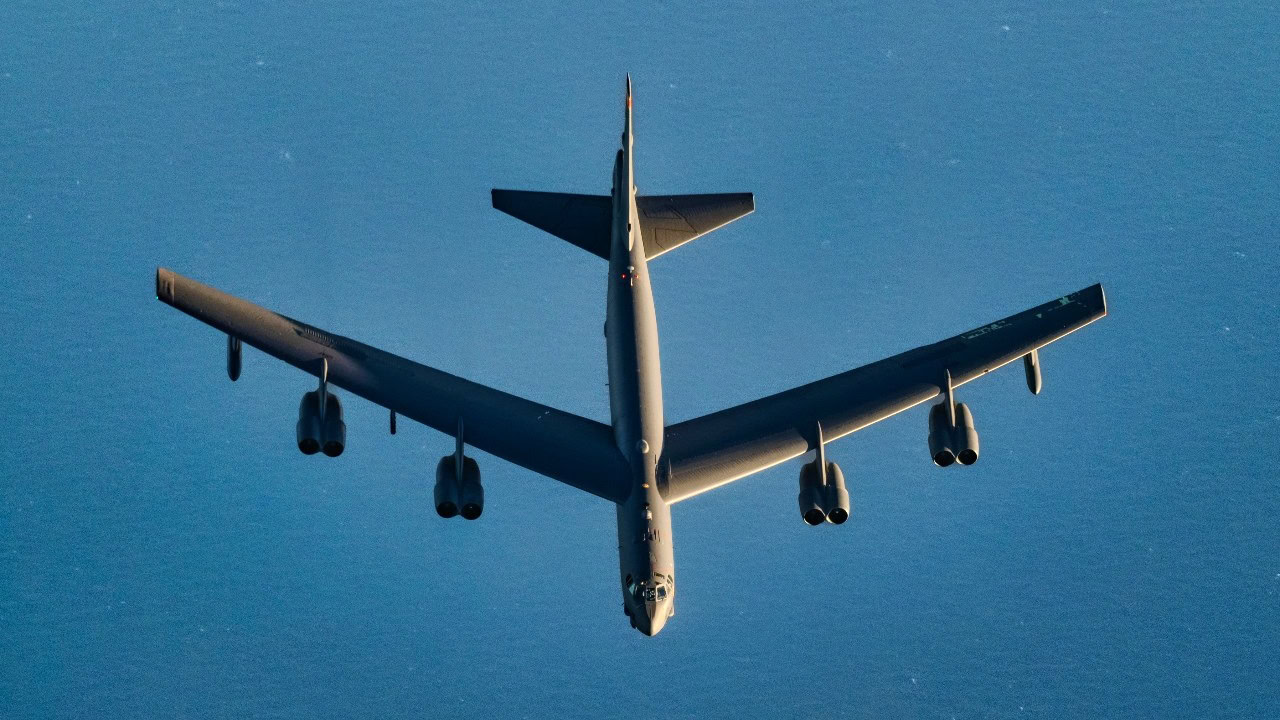On December 18, 2024, aero engine maker Rolls-Royce announced meeting a significant target for the US Air Force’s B-52J modernization program. Specifically, this was the completion of a Critical Design Review (CDR) for the aircraft’s F130 engine.
This new engine is one of the many upgrades to the platform that will comprehensively modernize the entire B-52 Stratofortress fleet—probably the most famous bomber of its kind and a name as well-known as its WWII predecessor, the B-17.
The publicly released statements about the B-52J meeting this milestone emphasize that this engine “paves the way for final development, rigorous testing, and production” and ensures that “the modernized bomber will meet the evolving operational needs of the US Air Force USAF.”
However, what might threaten the future of this program are the current cost-cutting initiatives being identified by the new Department of Government Efficiency (DOGE), led by tech mogul billionaire Elon Musk.
President Donald Trump created the organization to identify opportunities for significant reductions in federal employment levels.
Musk has defended the actions of DOGE as necessary to reduce “government bloat” and improve efficiency within the central US Government departments.
If Musk were to conduct a review of the B-52J program, what might his decision be—to keep the program or close it down?
Why DOGE Is Skeptical of New Aircraft Programs
What concerns the personnel involved in the B-52J program is that DOGE has already laid down a marker, in a sense, in its heavy criticism of the F-35 program.
Musk has referred to the F-35 program as a “flop” and its builders as “idiots,” even before his groups of DOGE investigators have actually investigated the program.
Their criticisms are at odds with at least one USAF senior leader who accuses Musk of overestimating the level to which drones could replace fighter jets and carry out their missions in actual warfighting.
The F-35 program has many issues. DOGE might consider how its program delays, slow deliveries, and increased prices compare unfavorably with the recent appearance of two new Chinese fighter aircraft late last year.
This may explain some of Musk’s pre-emptive criticism of the F-35.
In response to Musk, US Air Force Secretary Frank Kendall argues that the DOGE leader’s perspective is flawed in that it is one of an engineer and not a warfighter. According to Kendall, Musk’s claims about drone superiority are still far in the future.
Why The B-52J is Good Value for Money
As people involved in the B-52J have explained to 19FortyFive, Musk would have a much more difficult time lambasting that program in the same manner he has gone after the F-35.
The F130 engine is a bargain in and of itself. It was developed from an existing commercial engine design and is not a “clean sheet” solution developed just for this program.
The USAF will enjoy tremendous savings by piggybacking on the Rolls-Royce BR725 program.
These new engines will replace the decades-old Pratt & Whitney TF33 engines that have powered the B-52 for decades. The cost of $2.6 billion for the engine is very reasonable.
Given that it was designed to meet modern requirements, including improved fuel efficiency, enhanced reliability, and reduced maintenance needs, it is of considerable value for money.
It will never get even close to the headaches that have dogged the F-35 and its F135 engine.
Moreover, the engine and the other improvements will allow the B-52 to remain operational until the 2050s, which adds significantly to the ability of the US to project strategic power.
No other platform can deliver the capacity that the B-52 does.
As the B-1s are withdrawn from service, they will become increasingly critical assets.
About the Author and Expertise
Reuben F. Johnson is a survivor of the February 2022 Russian invasion of Ukraine and is now an Expert on Foreign Military Affairs with the Fundacja im. Kazimierza Pułaskiego in Warsaw. He has been a consultant to the Pentagon, several NATO governments and the Australian government in the fields of defense technology and weapon systems design. Over the past 30 years he has resided in and reported from Russia, Ukraine, Poland, Brazil, the People’s Republic of China and Australia.

